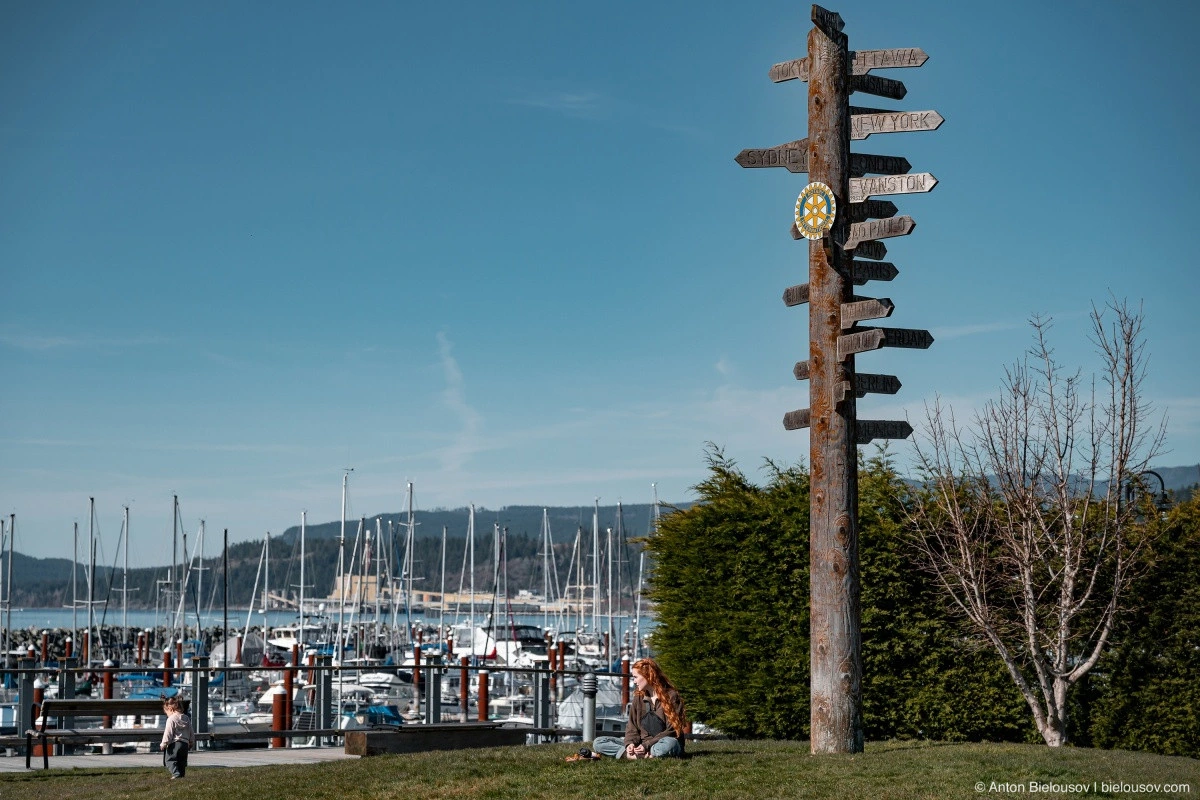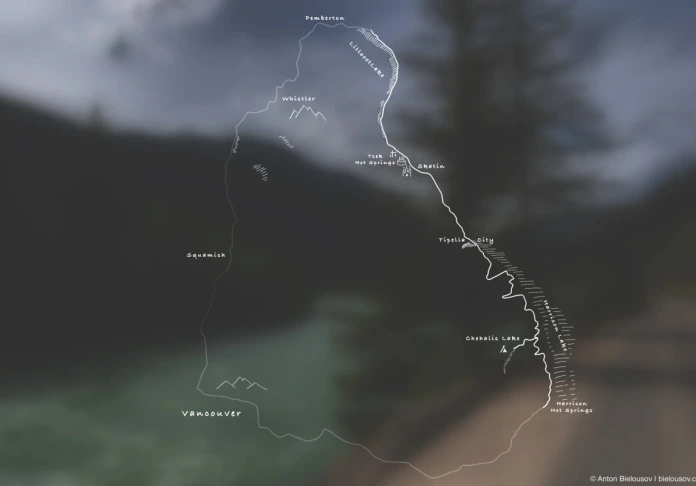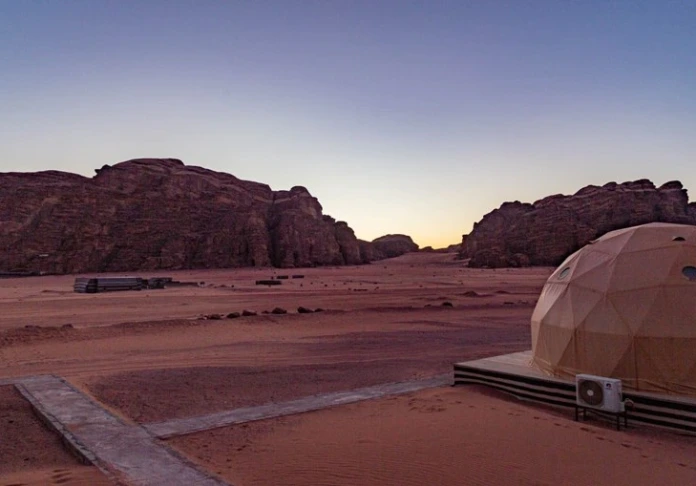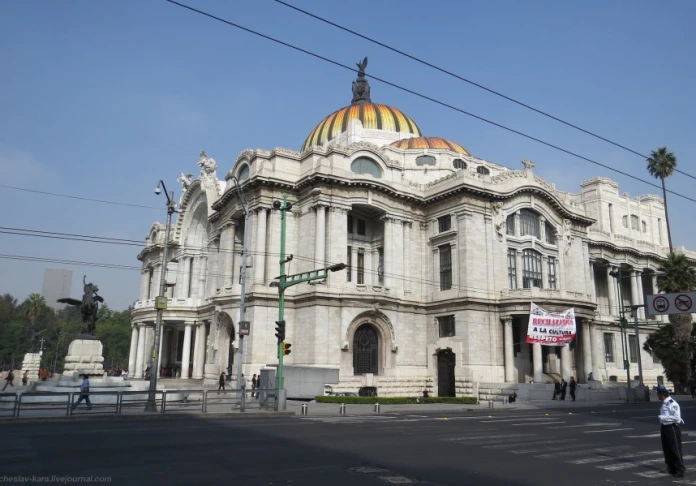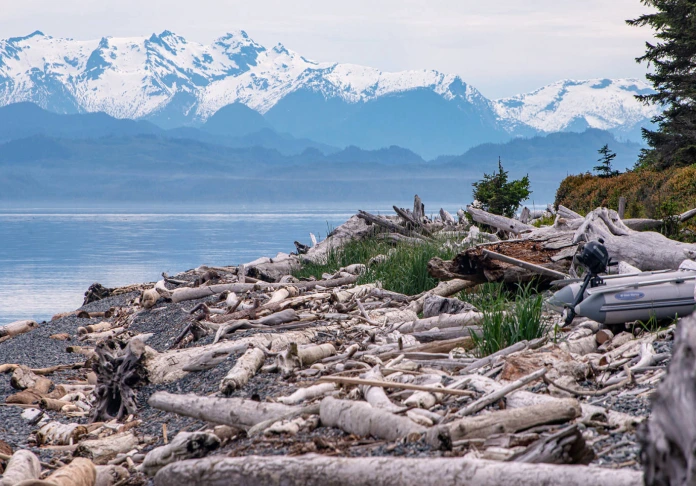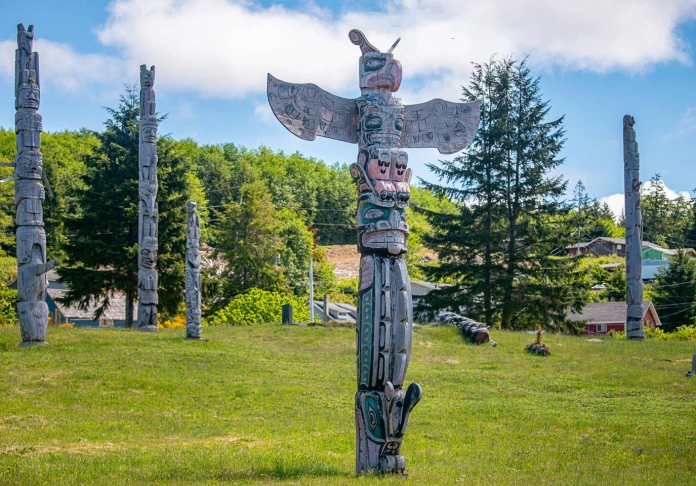Powell River Hulks
I've been writing about ships quite often lately—might as well get myself a boat. But unlike the last post, this time we'll talk not so much about ships as about the town of Powell River and one of its rather interesting landmarks. The town itself, with 13,000 residents (16,000 including surrounding areas), cannot be called a tourist destination. It's more of a remote community for those who find the very idea of living not just in a big city, but even near one, unbearable: two ferries with a transfer easily solve this issue. Despite its remoteness (it can only be reached by air or sea), the town is quite well connected: a small airport and two ferry routes. In short, it's exactly what most of those who have chosen it as their home need. And if tomorrow you were to come to Powell River residents with a proposal to build a bridge for them, they'd send you far away.
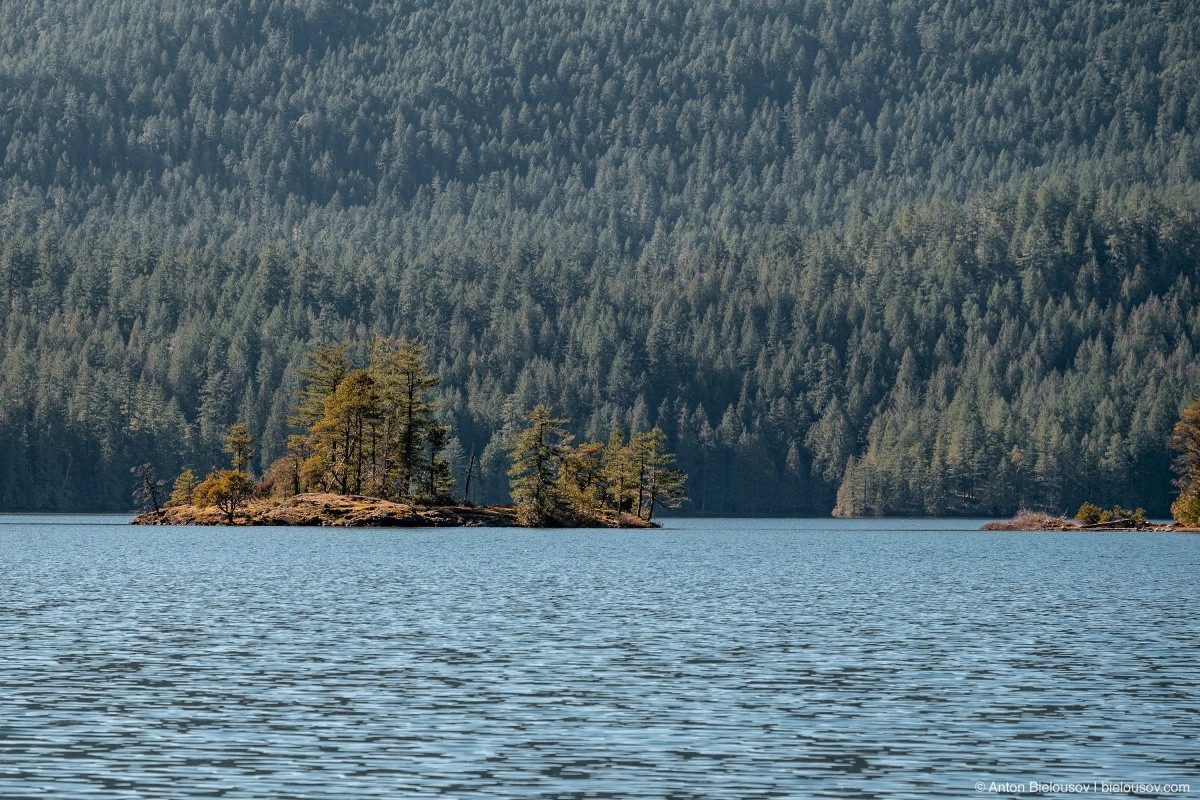
Ruby Lake
You can only get to Powell River by car using two ferries: first to the Sunshine Coast, where you can spend the whole day visiting beaches or even checking out a local wonder—the standing wave in Skookumchuck Narrows.
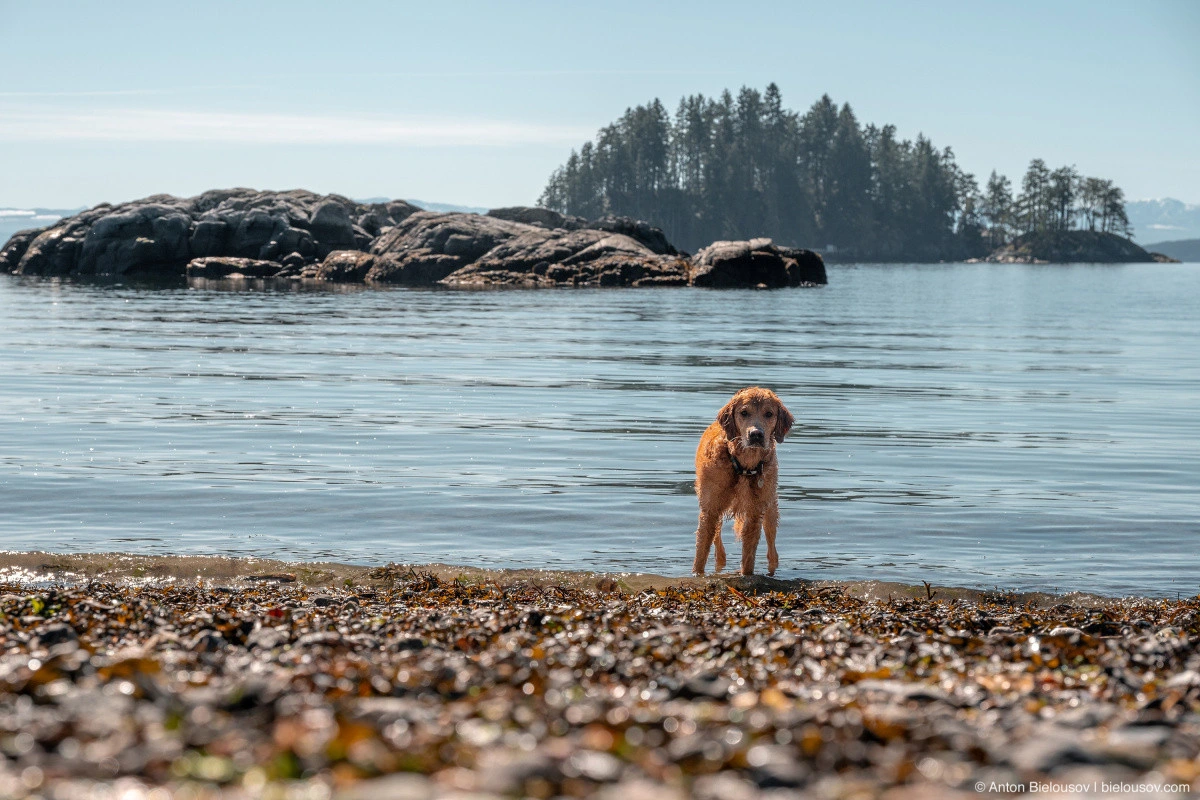
In any case, you need to drive across the entire peninsula (approximately 80 km) and catch the second ferry (from Earls Cove to Saltery Bay).
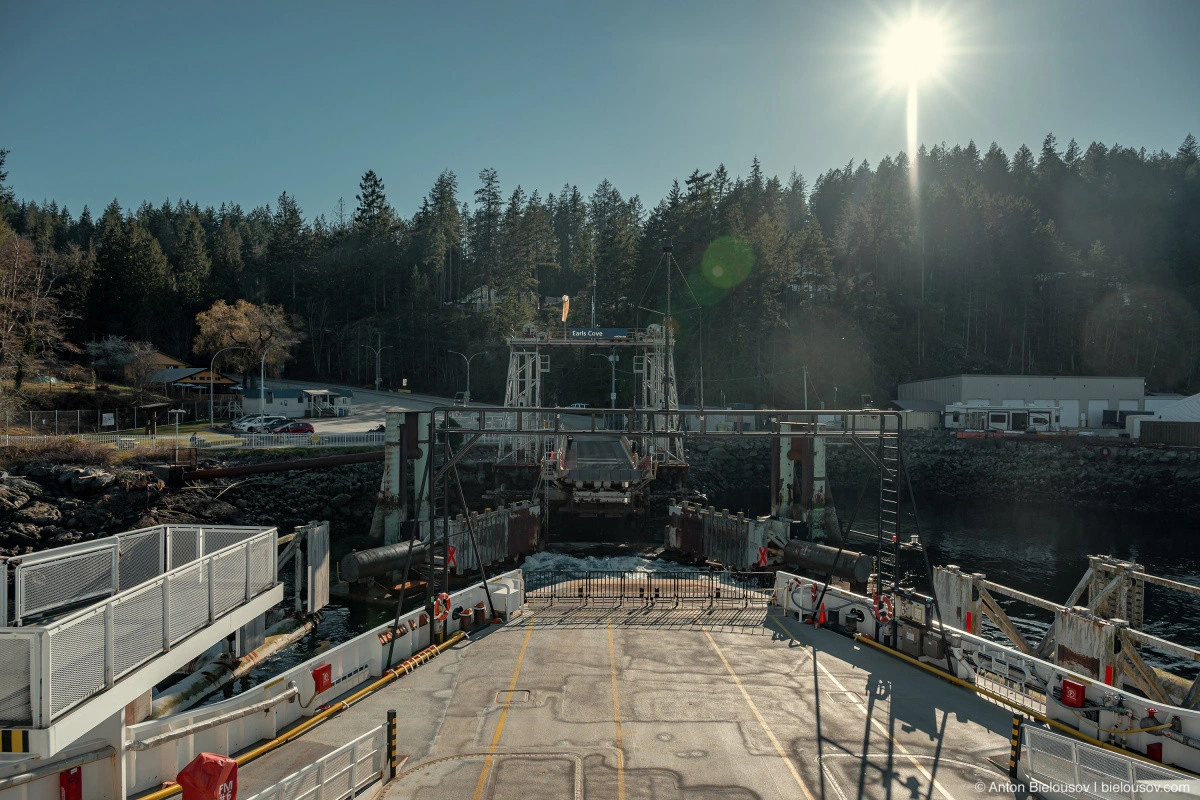
Each leg of the route takes 40–50 minutes.
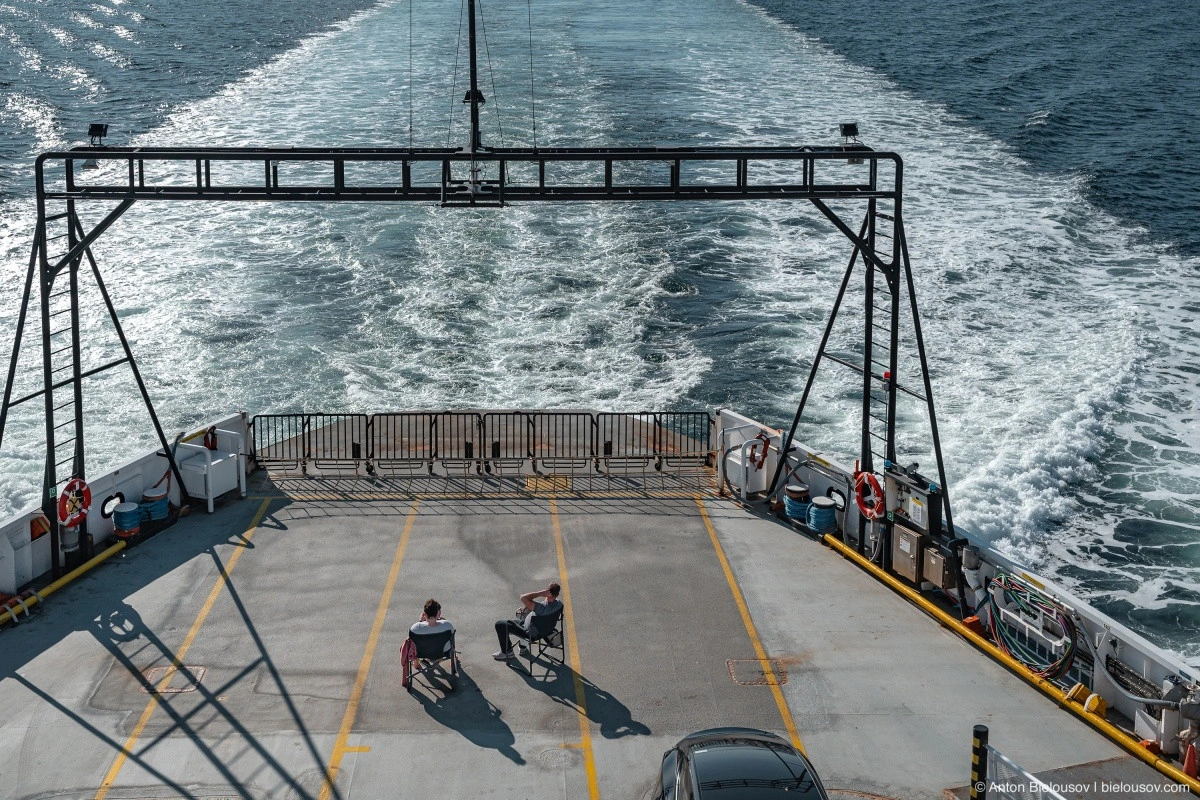
Accompanied by stunning views from the deck, time flies unnoticed.

Seriously, $80 of enjoyment or something like that—the coastline's beauty can compete with an Alaskan cruise (mostly, of course, thanks to the closer shores and the snow still gracing the mountain peaks).
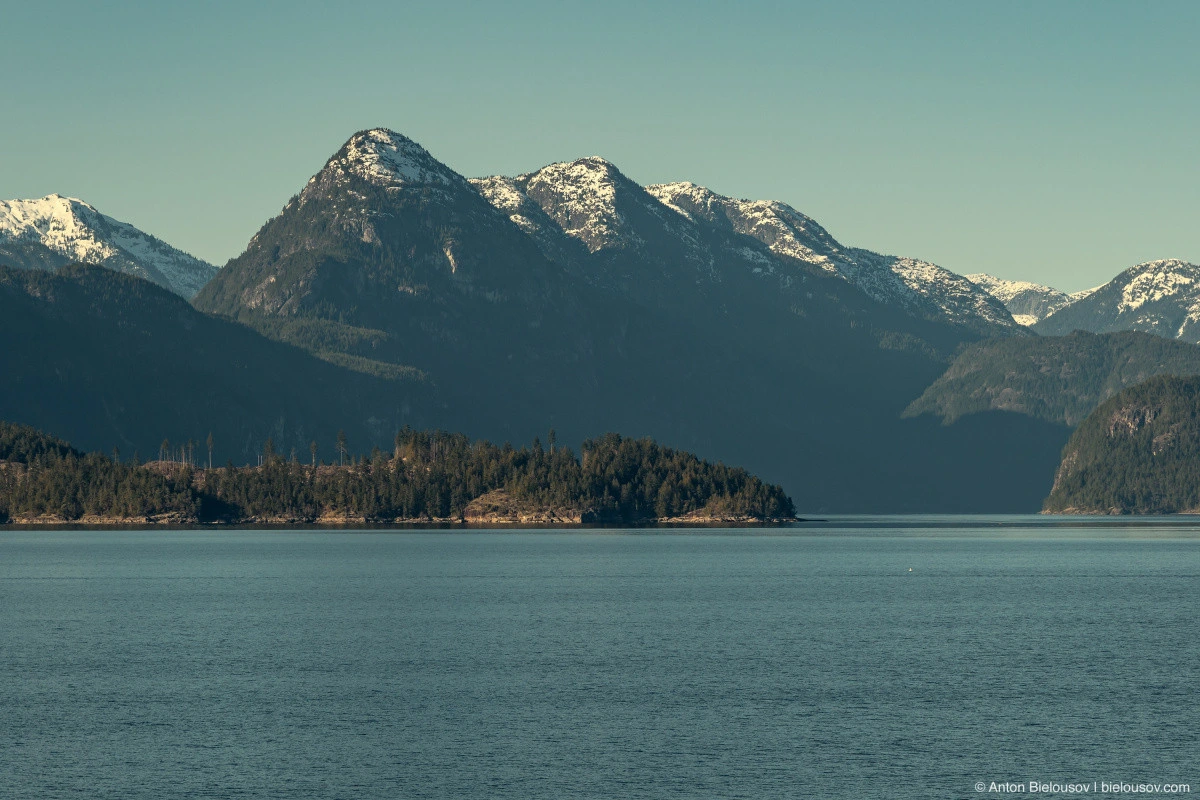
If you look closely, you can see Harmony Falls on the mountain slope, which is 444 meters high. It is one of the tallest waterfalls in British Columbia and can only be seen either from this ferry or from a private boat.
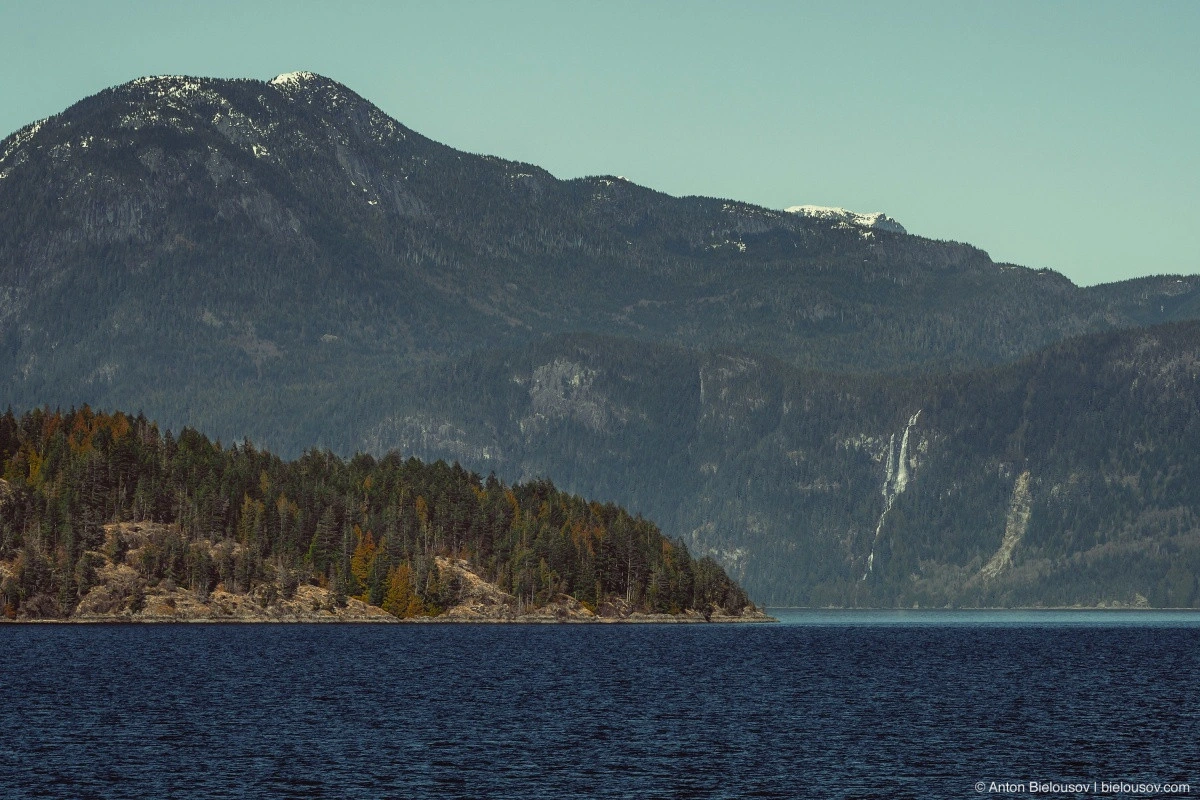
Harmony Falls In short, the journey to Powell River itself is an all-day adventure.
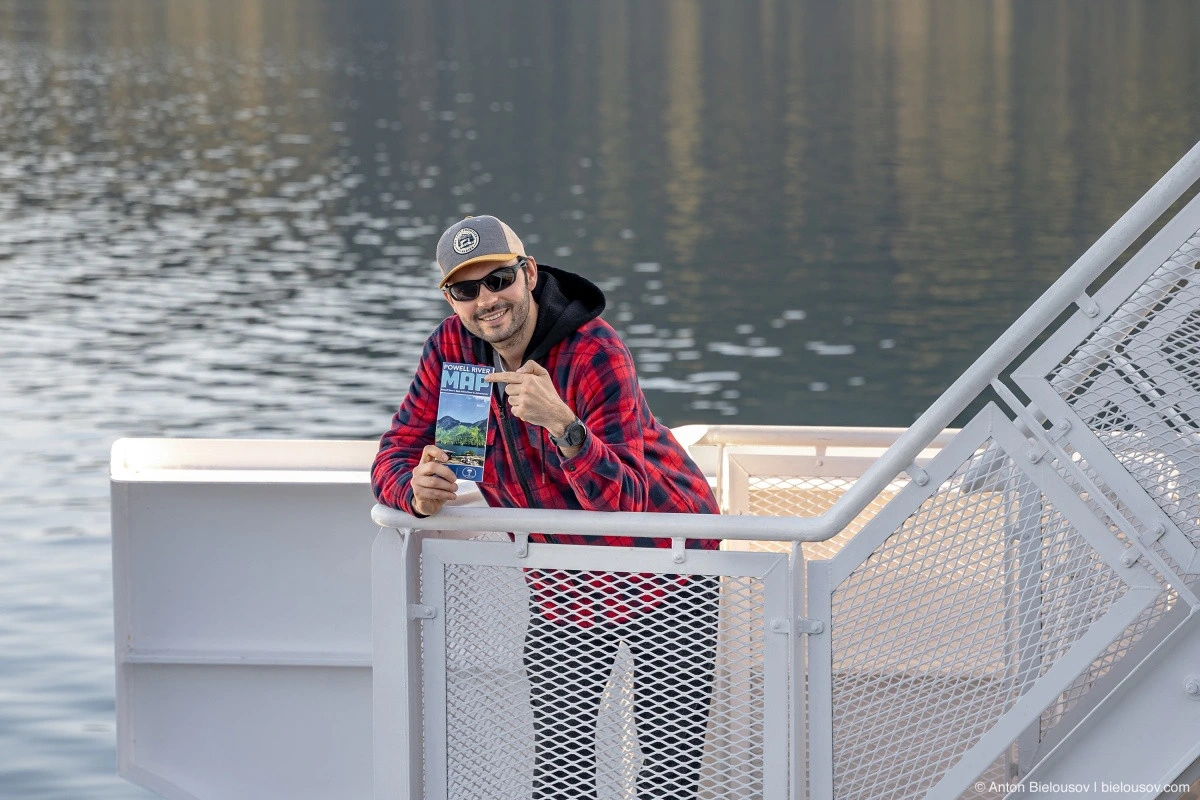
So all we managed to do on the first day was to watch the sunset from a private beach in the backyard of the Airbnb we rented.
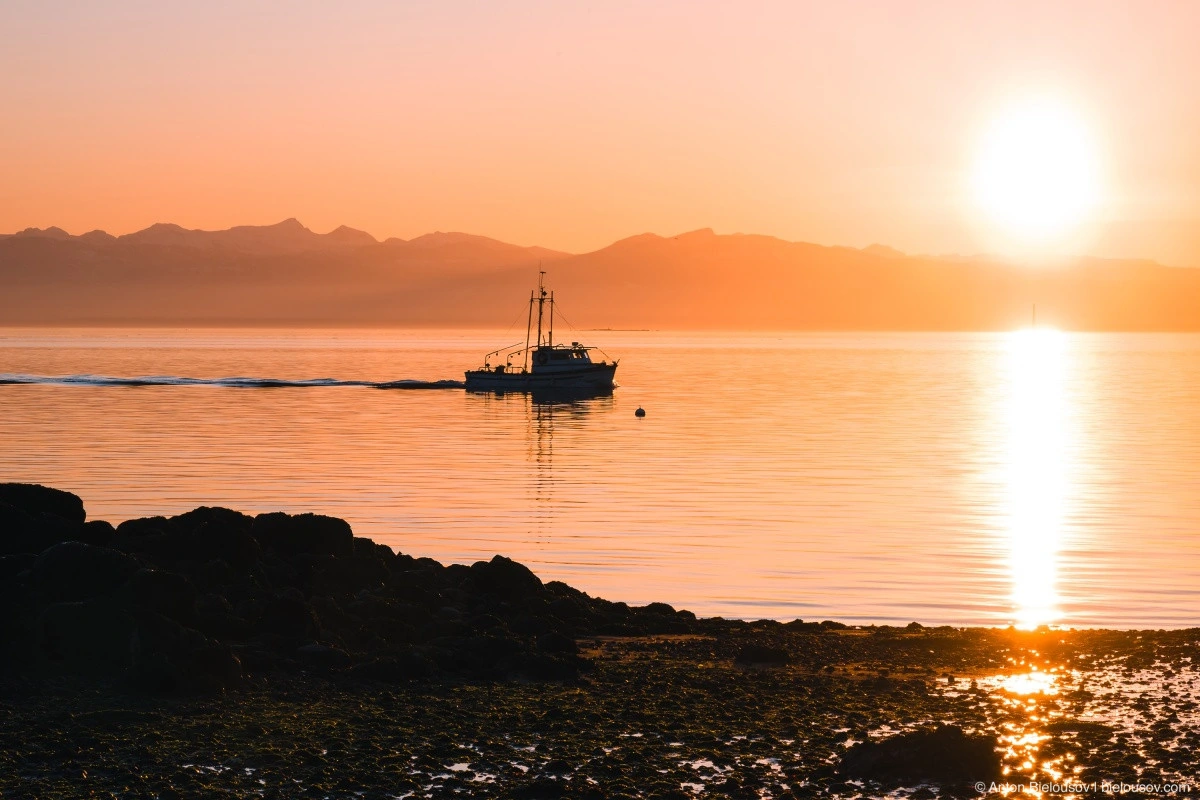

And only the morning, as I like to say, revealed who slept where.
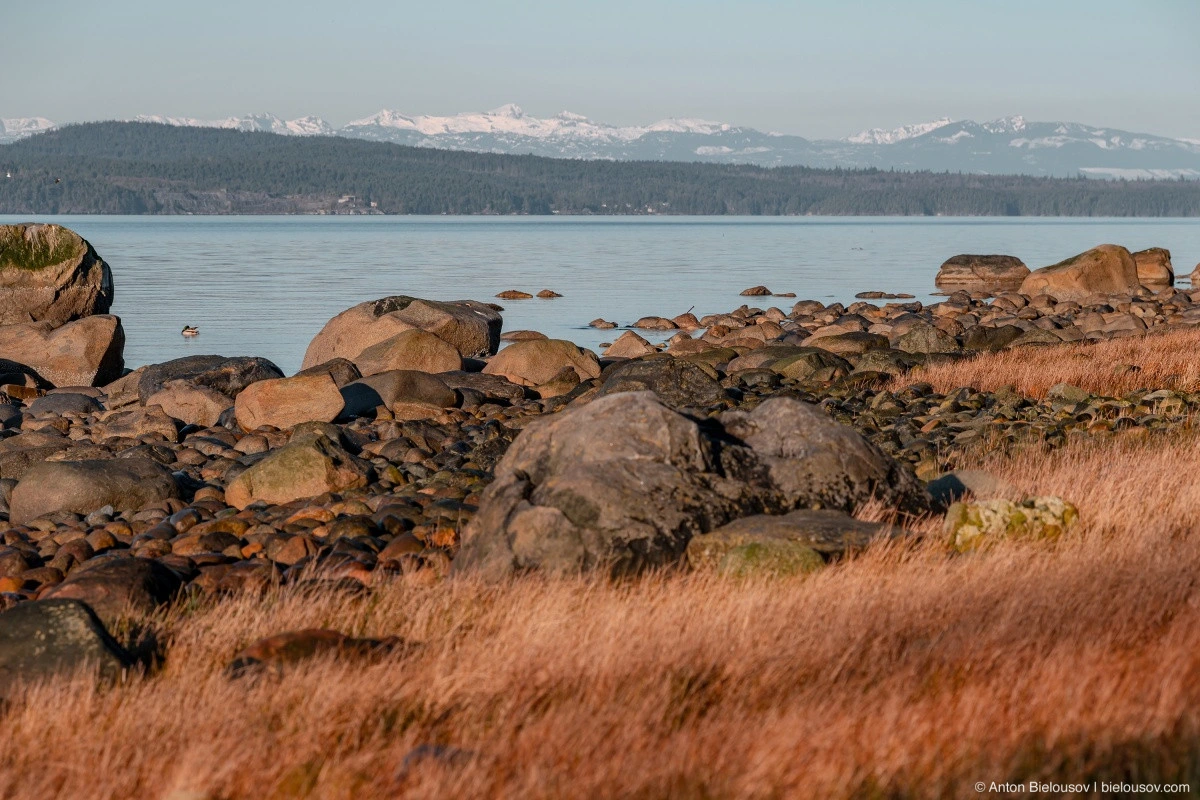
The first impression—it all looks very similar to Malcolm Island.

Indeed, there are two ferries, rocky beaches, and an opposite shore at about the same distance and just as hilly. And from time to time, sea lions swim along the coast. What can I say—the region is almost the same, just on different sides of the Johnson Strait. People make a point of greeting each other on the streets. It’s quiet and peaceful.
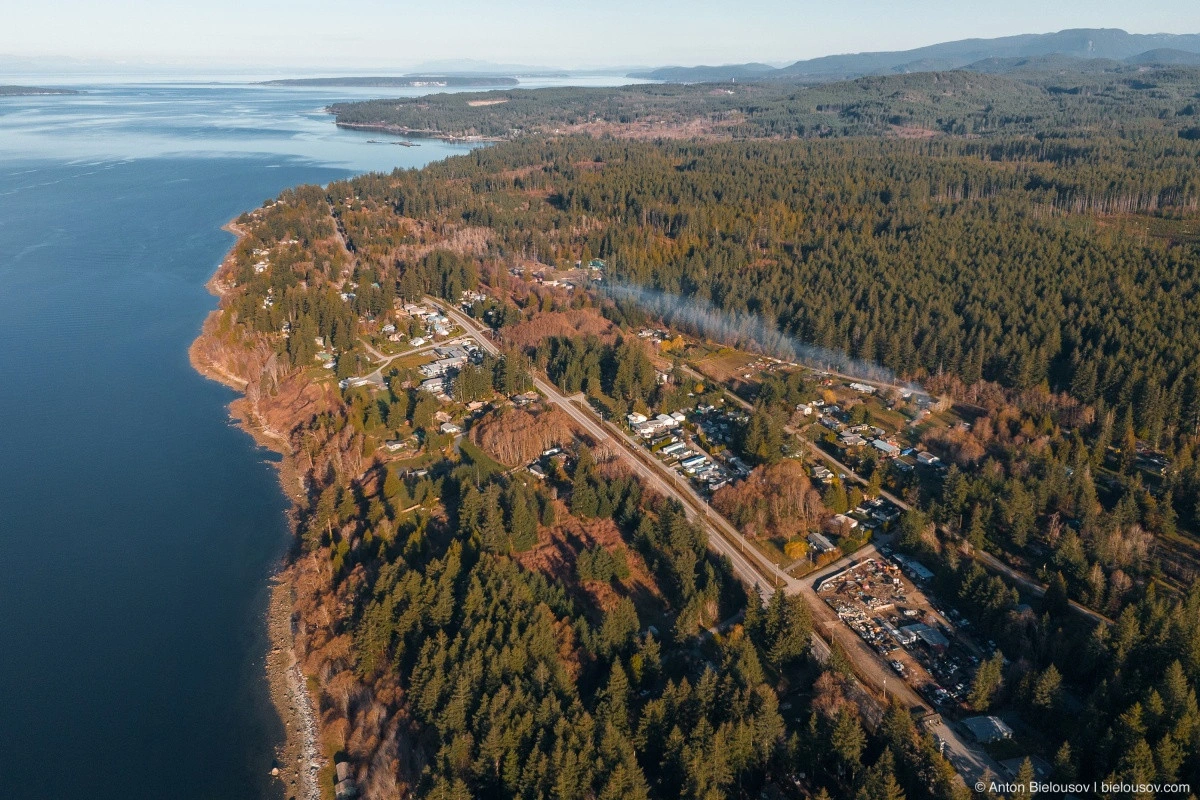
But that’s where the similarities probably end.
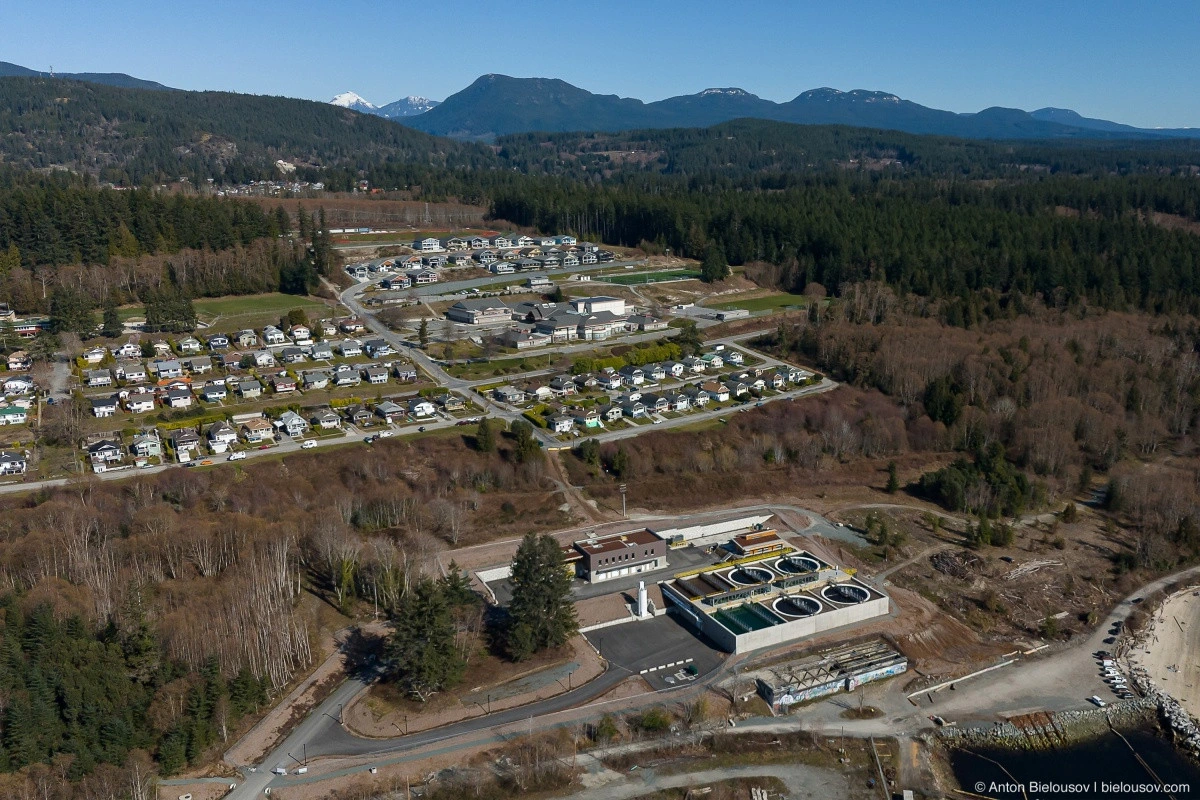
After all, Powell River is, though small, still a city.
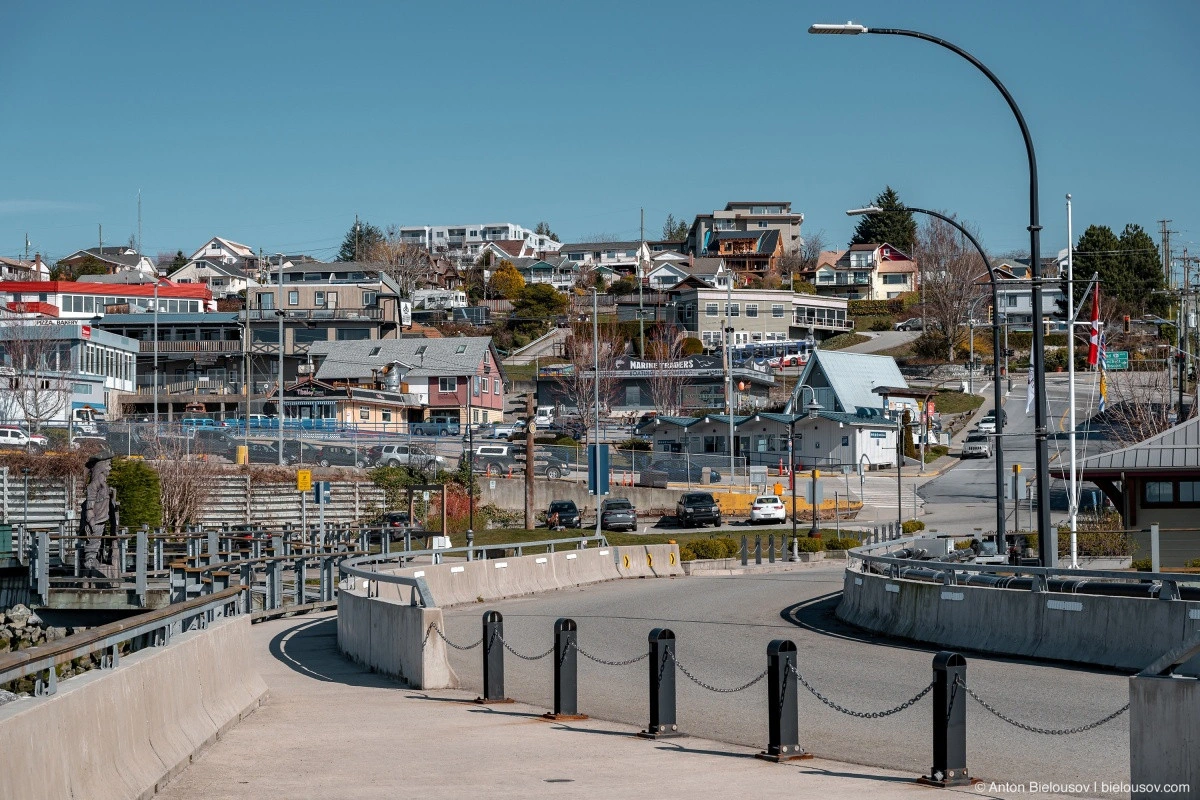
Powell River is probably the oldest continuously inhabited settlement in North America, assuming it stands on the site of a Tla'amin indigenous settlement, which is believed to be 8,000 years old (older than the Egyptian pyramids, for reference). Today, the Tla'amin population is estimated at 1,250 people.
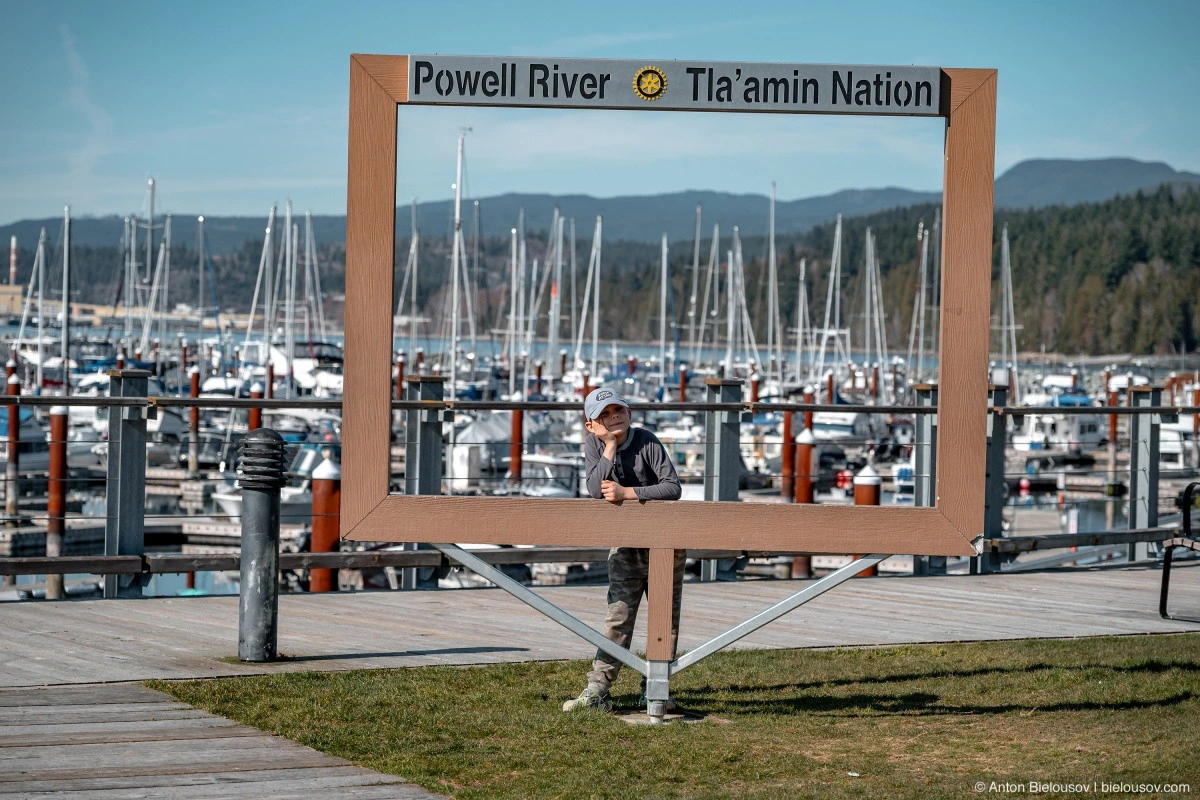
According to informational signs, somewhere on the beach, there are possibly the oldest petroglyphs (rock carvings) in the Vancouver Island fjord region, many of which date back 14,000 years.
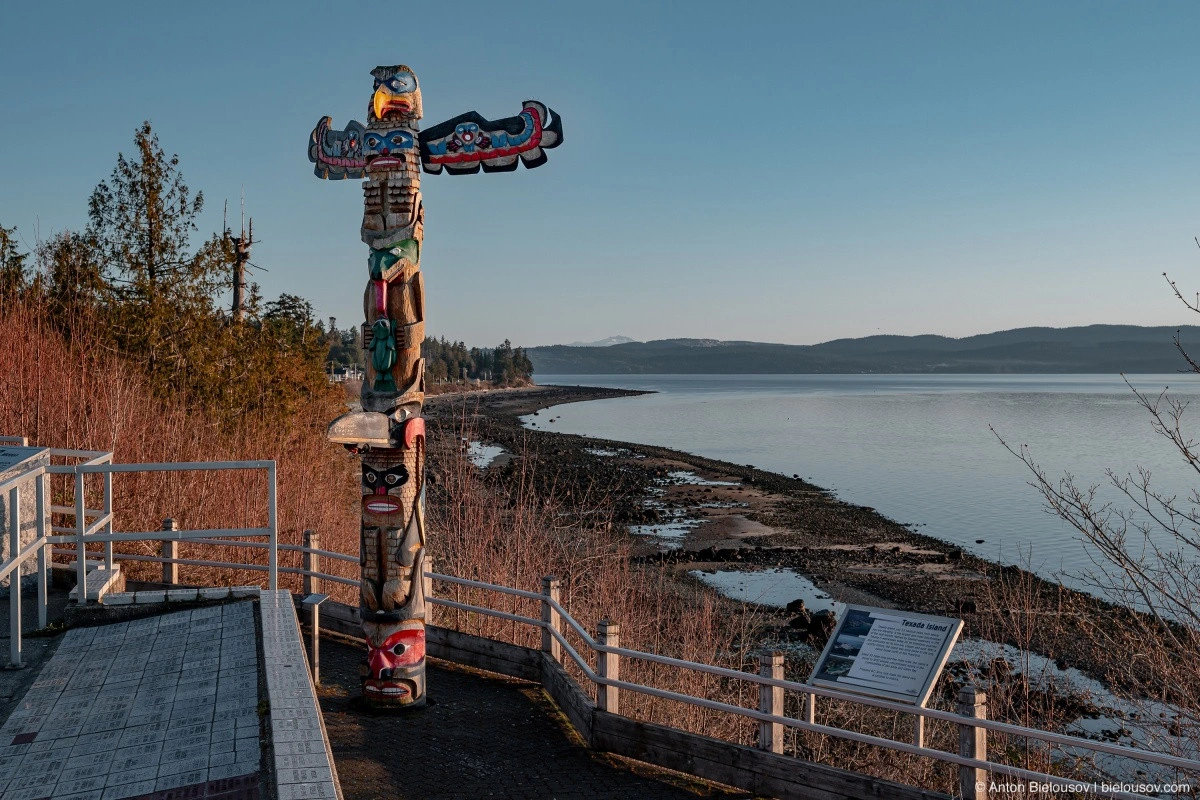
Unfortunately, I only learned about them the night before leaving and couldn’t find any mentions online (except for one map pointing to the start of the same beach but giving no exact coordinates or description of what to look for).
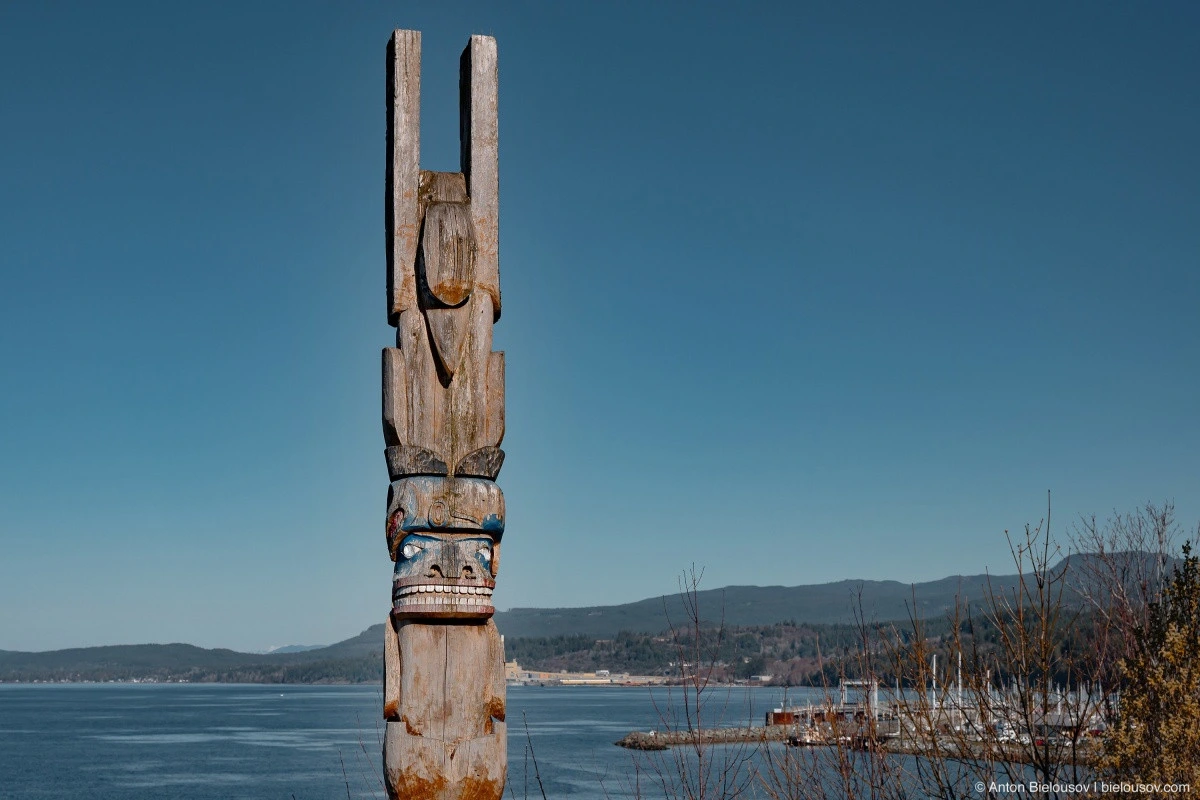
Nevertheless, a quick search and inquiries with locals the next morning yielded no results, but now there’s a reason to return.
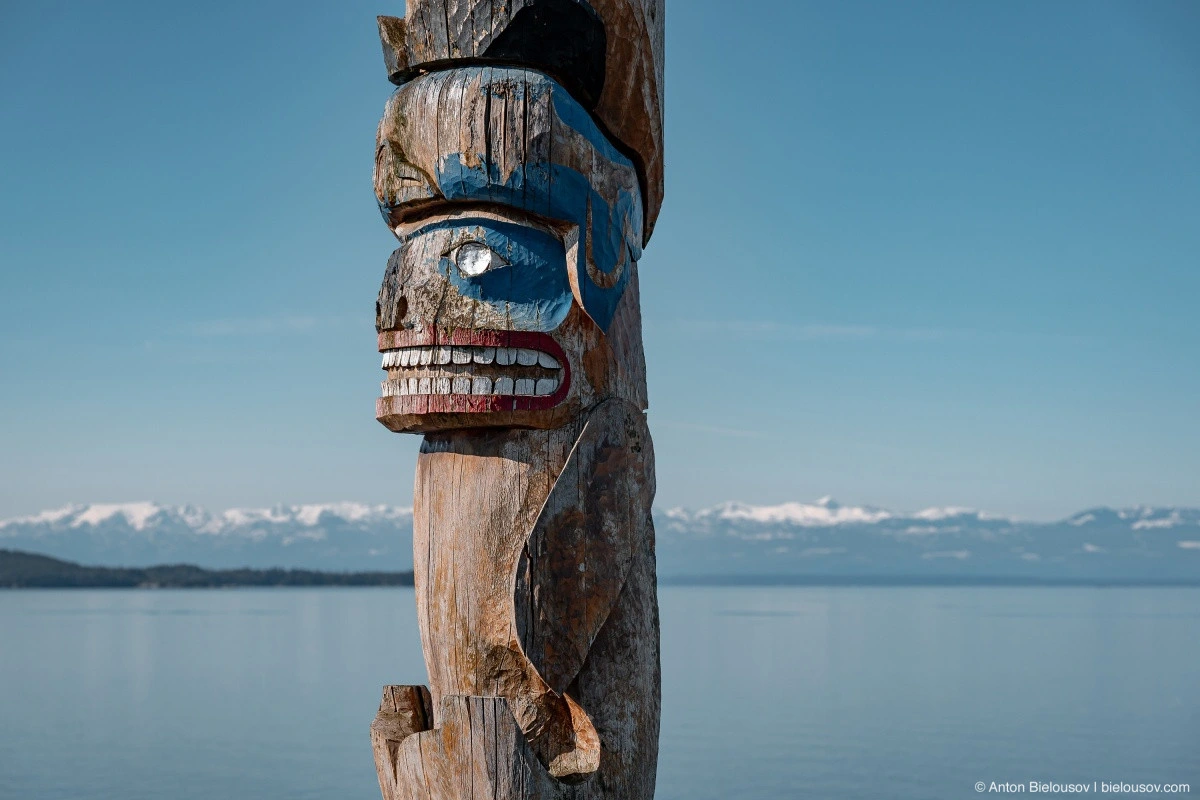
In general, it’s possible that the petroglyphs are said to be “on these shores” rather than specifically on this beach, because there is one location in the northern part of the peninsula and on neighboring islands (Okeover Arm) accessible by water, where they are definitely present. You can see more here.
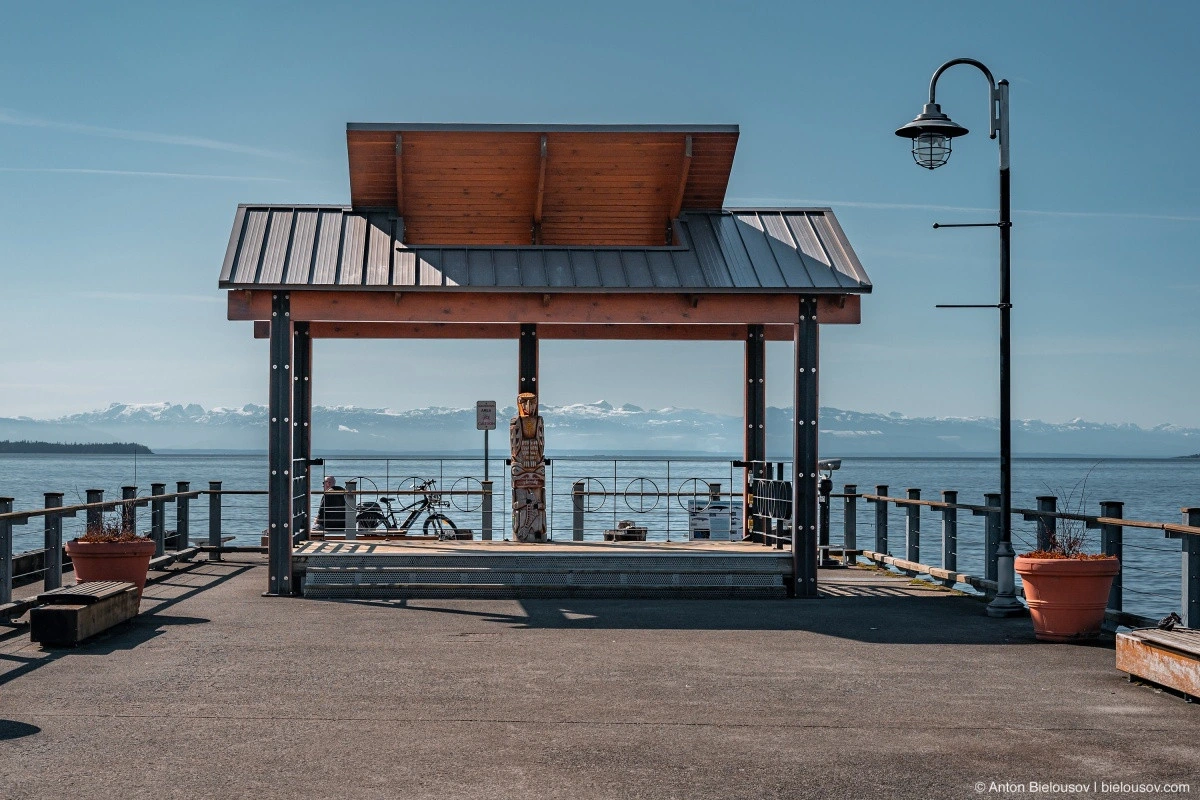
Also, the city is home to Canada’s oldest continuously operating cinema (since 1913) and a few charming buildings in the historic downtown—around 400 buildings have been preserved in total.

But all of this pales in comparison to the monstrous cellulose plant complex.
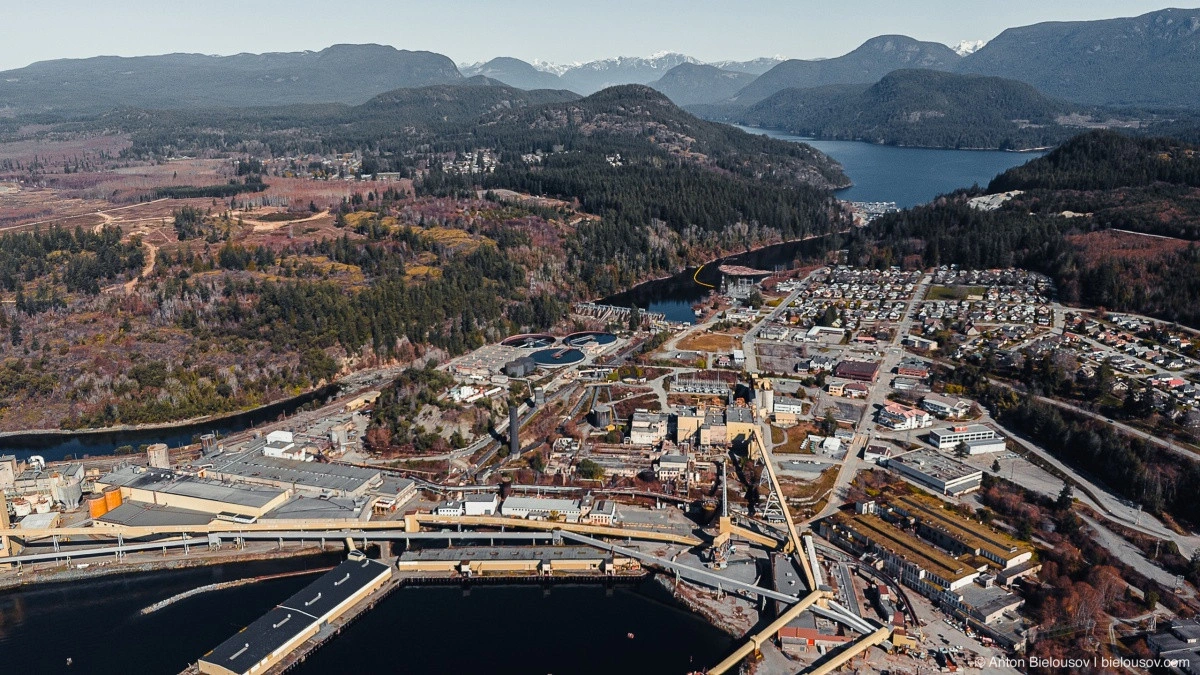
Notice the left side of the photo above, where the river flows from the dam to the bay—it’s the namesake Powell River (Powell River), the second-shortest river in the world at the time of the dam’s construction. However, since 2006, the Guinness World Records stopped registering this category, as many even 20-meter canals began being named as rivers after their flooding. Opened in 1912, this was the only such plant in British Columbia and the largest in the world. In fact, it was thanks to this plant that the town grew.
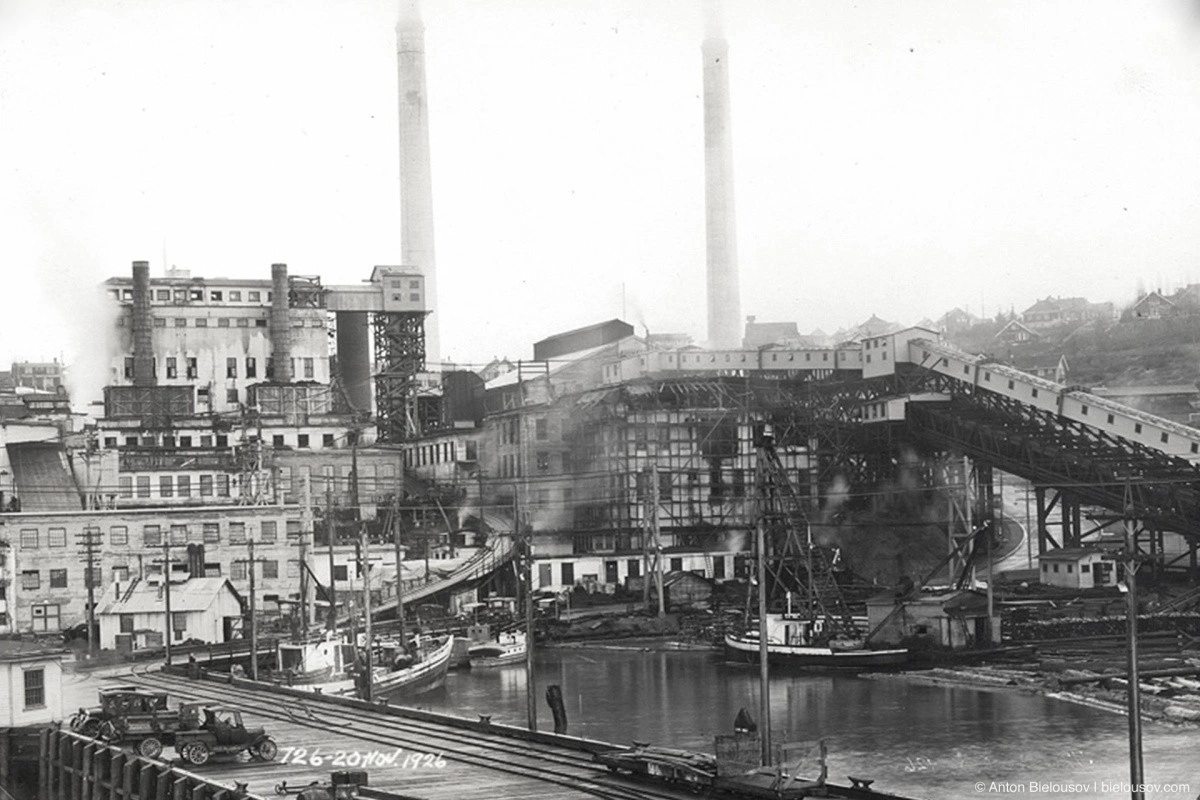
View of the Powell River Company Mill, 1926. Model T Ford wagons are parked on the wharf.
Powell River Historical Museum & Archives (2007.50.4418). Photographer Maud Lane.
At its peak, every 1 in 25 newspapers published worldwide was printed on paper from Powell River. In the 21st century, production significantly decreased, and in 2021 a decision was made to shut it down and possibly sell the land. However, the local Tla’amin tribe also claims these lands, as the plant was built on the site of an indigenous settlement whose residents were relocated, and the river blocked by a dam. The town wants to turn it into a park and recreational area. Overall, you get an idea of the scale and methods of this business. But here’s what they did next… To protect the floated timber from waves in the strait, the company began purchasing old decommissioned ships from 1930 onwards—starting with vessels from World War I and later World War II.
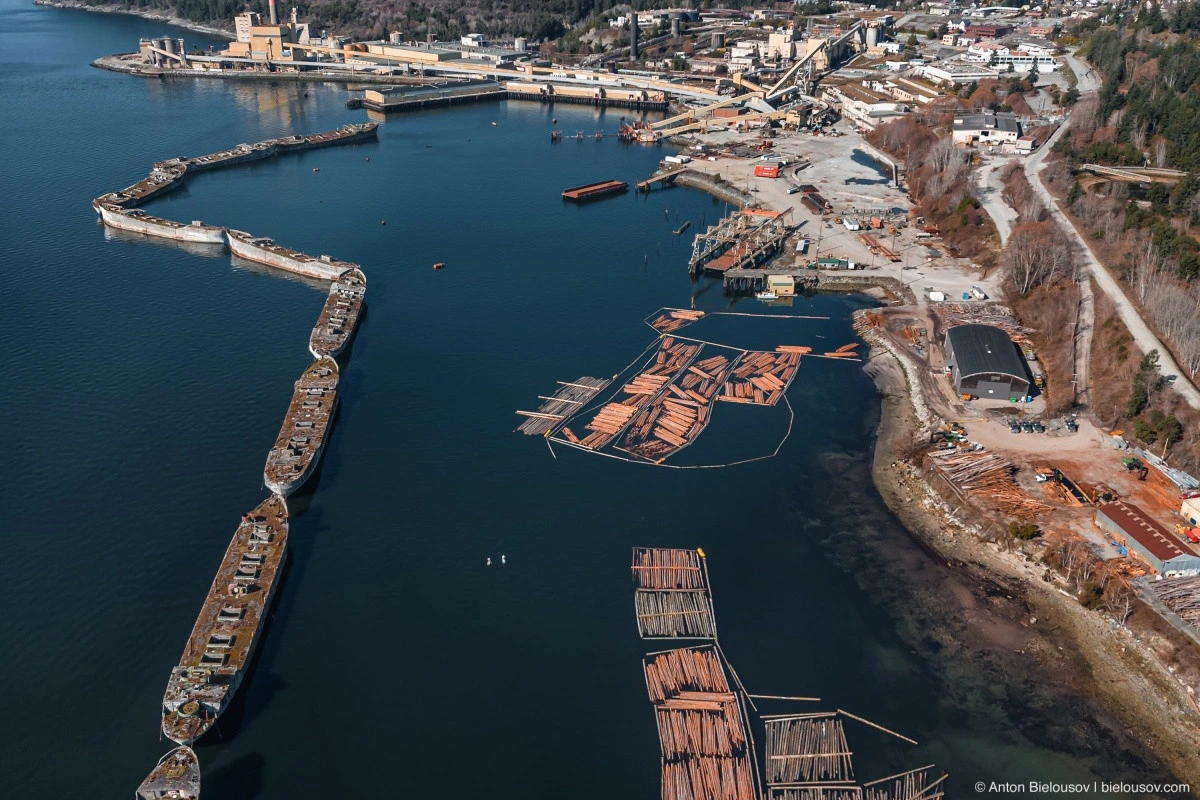
Mainly, these were tankers and fleet support ships.
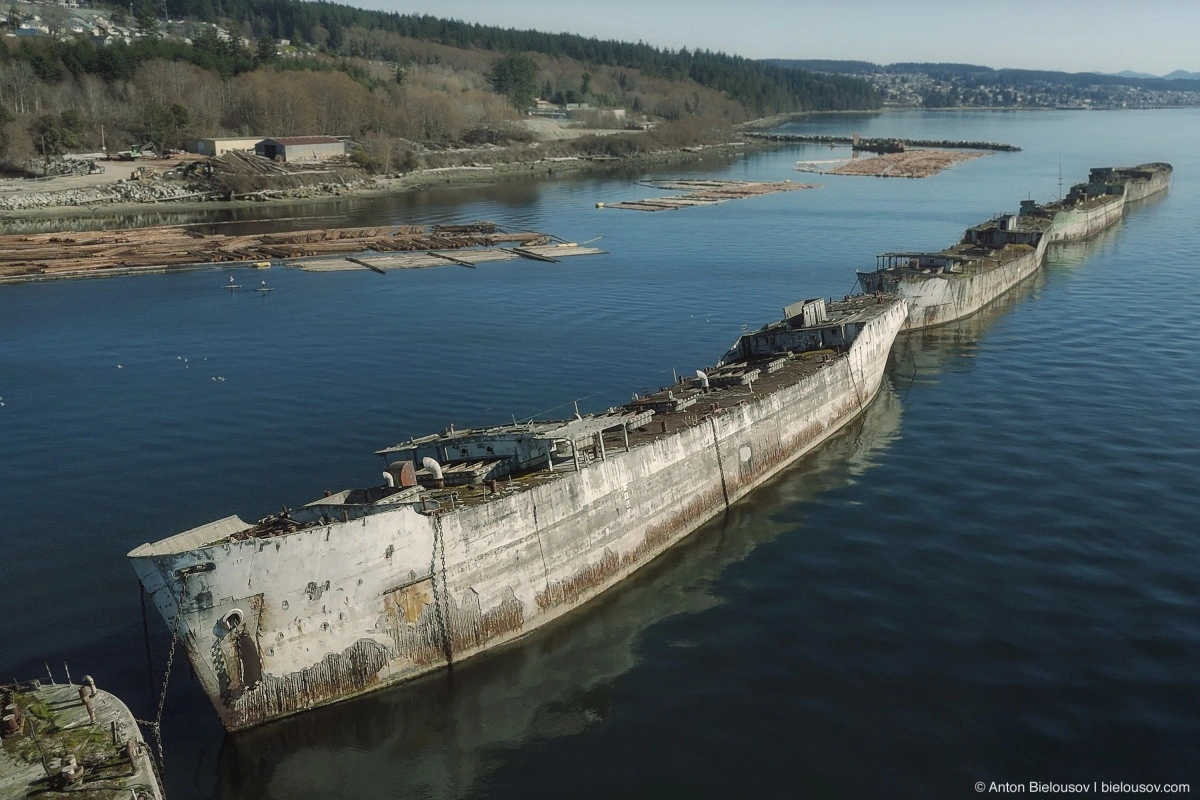
Henri Le Chatelier (1944)
Many of them, created during wartime and amidst a steel shortage, had hulls made of… concrete, making them almost useless in peacetime.

S.S. P.M. Anderson (1944)
«P.M. Anderson», for instance (in the foreground of the photo above), launched in 1944, completed only one voyage—from Manila to San Francisco—before being decommissioned.
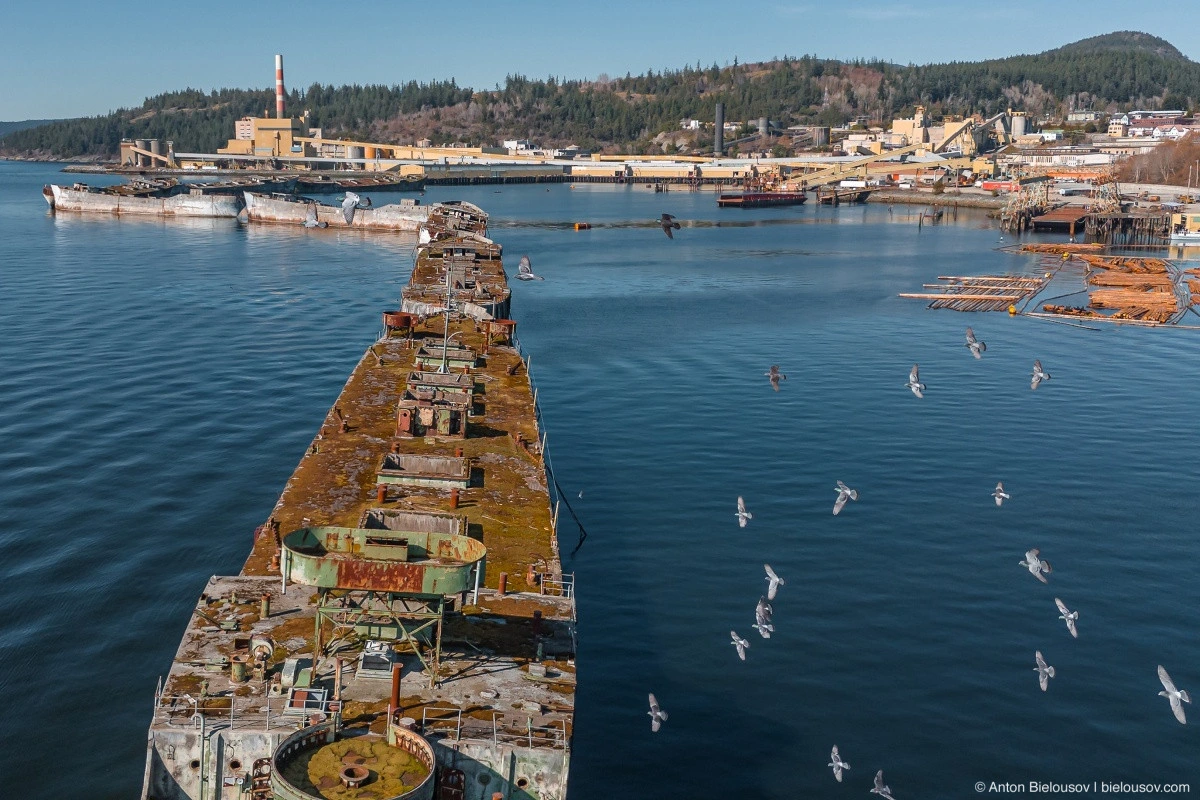
USS Quartz (1944)
«Quartz» never sailed independently and was used as a supply barge (essentially a floating warehouse) — initially in Pearl Harbor in 1944 and later during the first nuclear bomb tests at sea, at Bikini Atoll (Operation Crossroads) after the war.
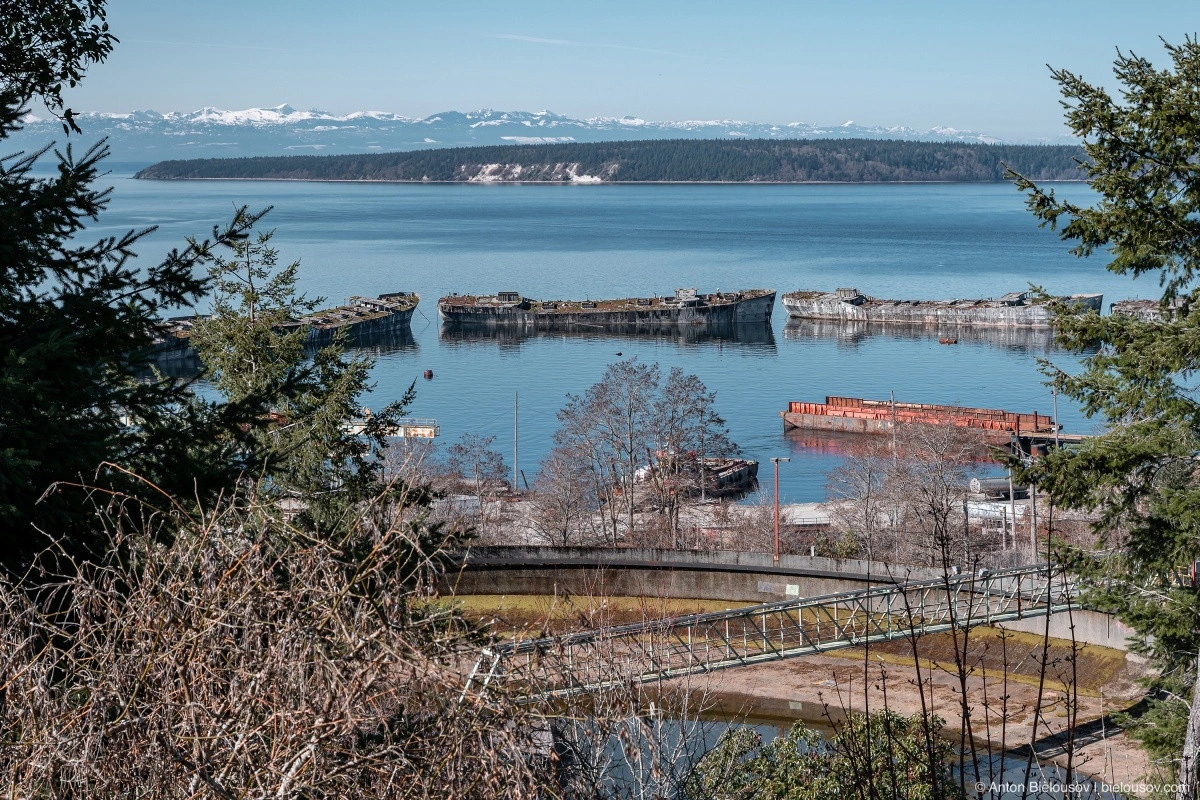
The holds of these already massive ships were filled with gravel, and the tanks with water, to submerge them by 4–5 meters.
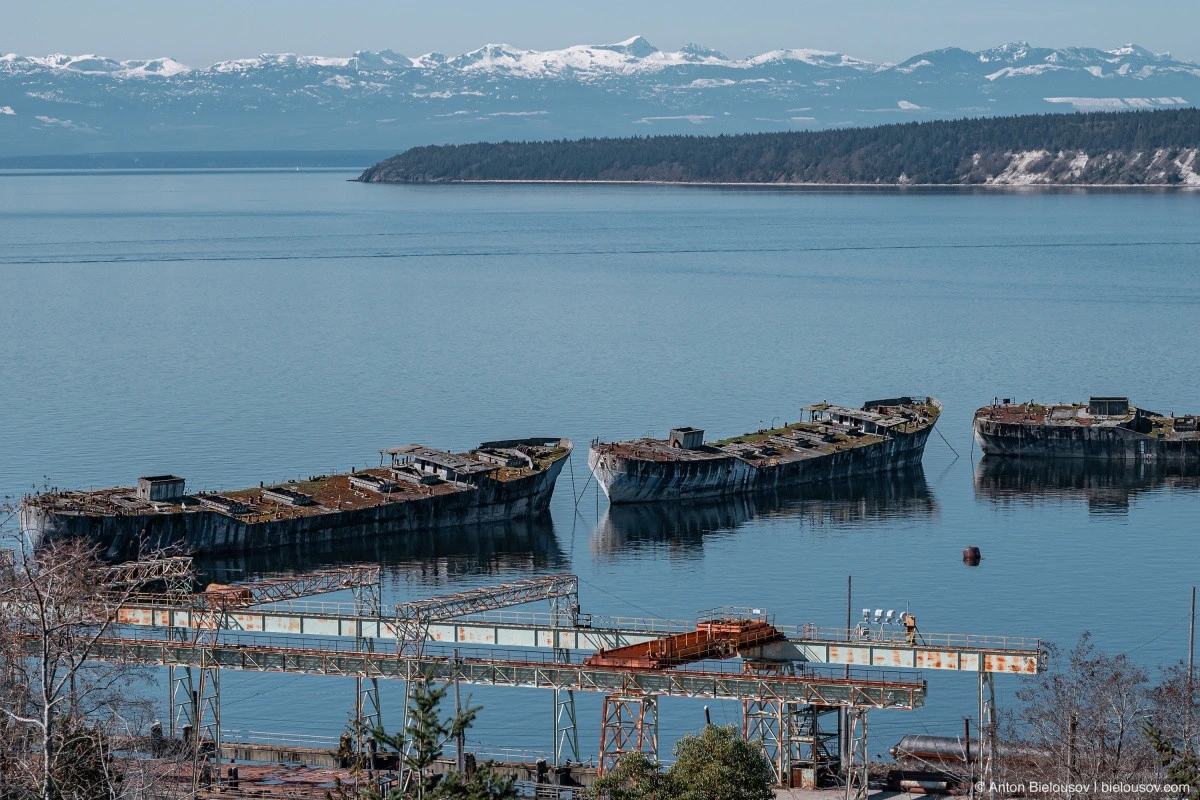
With such weight, they were fairly stable against waves, but in addition, each of them was anchored by 8 to 10 16-ton concrete blocks.
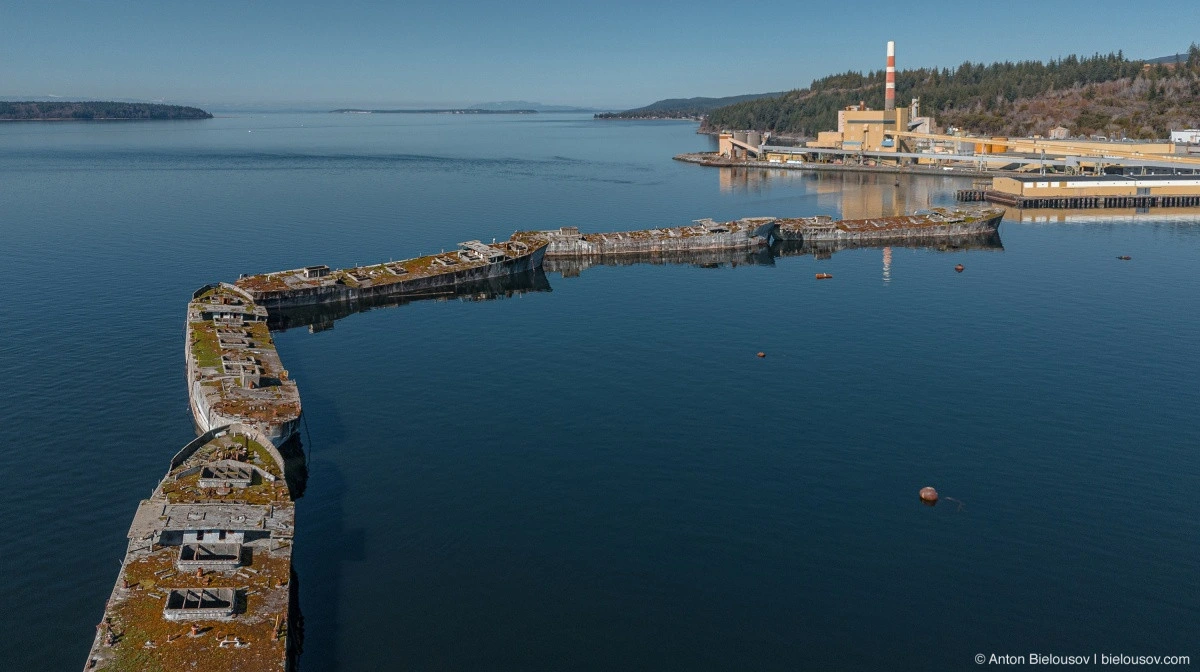
Between 1930 and 1966, the company purchased 19 ship hulls (though more accurately termed «hulks»). Even though the use of the bay for logging officially ended in 2001, 9 of these ships remain afloat. It is considered one of the largest floating breakwaters made of connected ships in the world.
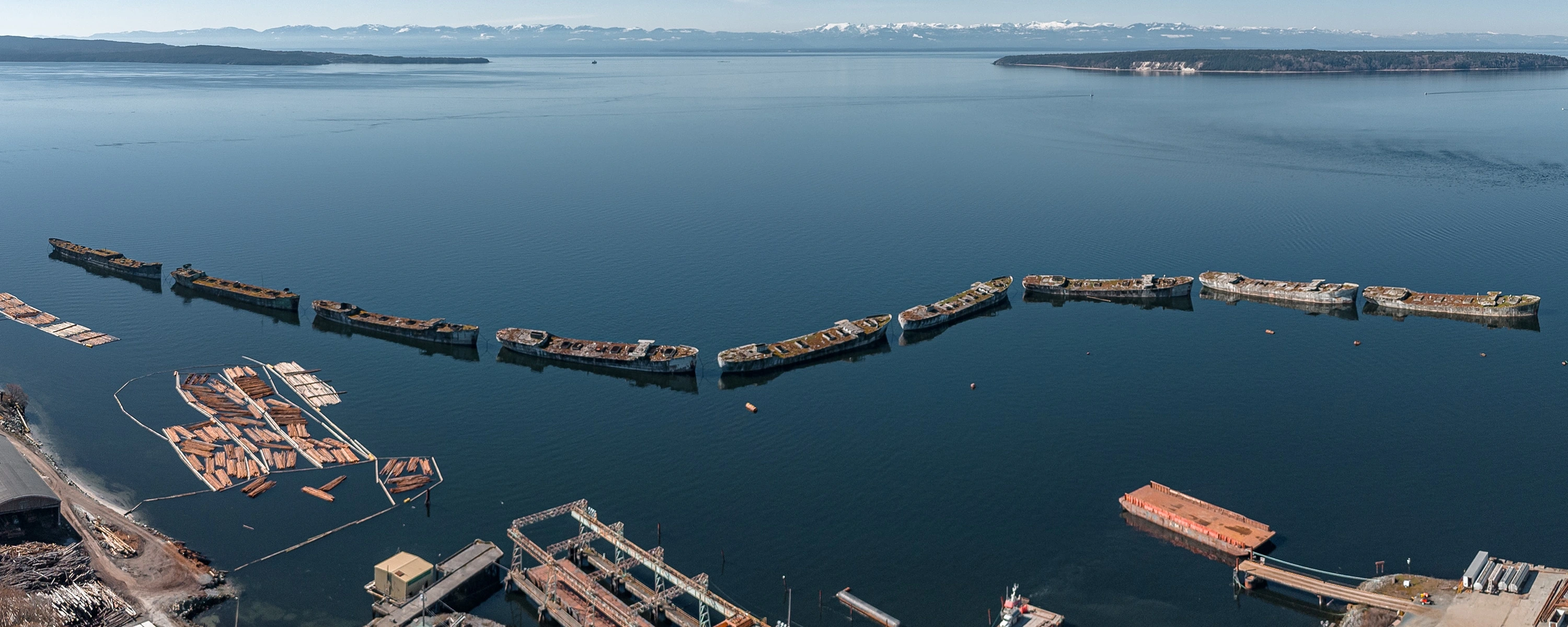
YOGN 82 (1944)
was sunk in 2018 and, at depths ranging from 10 to 35 meters, became a notable attraction for divers. Not to mention that its hull (now it can truly be called that) became the foundation for an artificial reef.
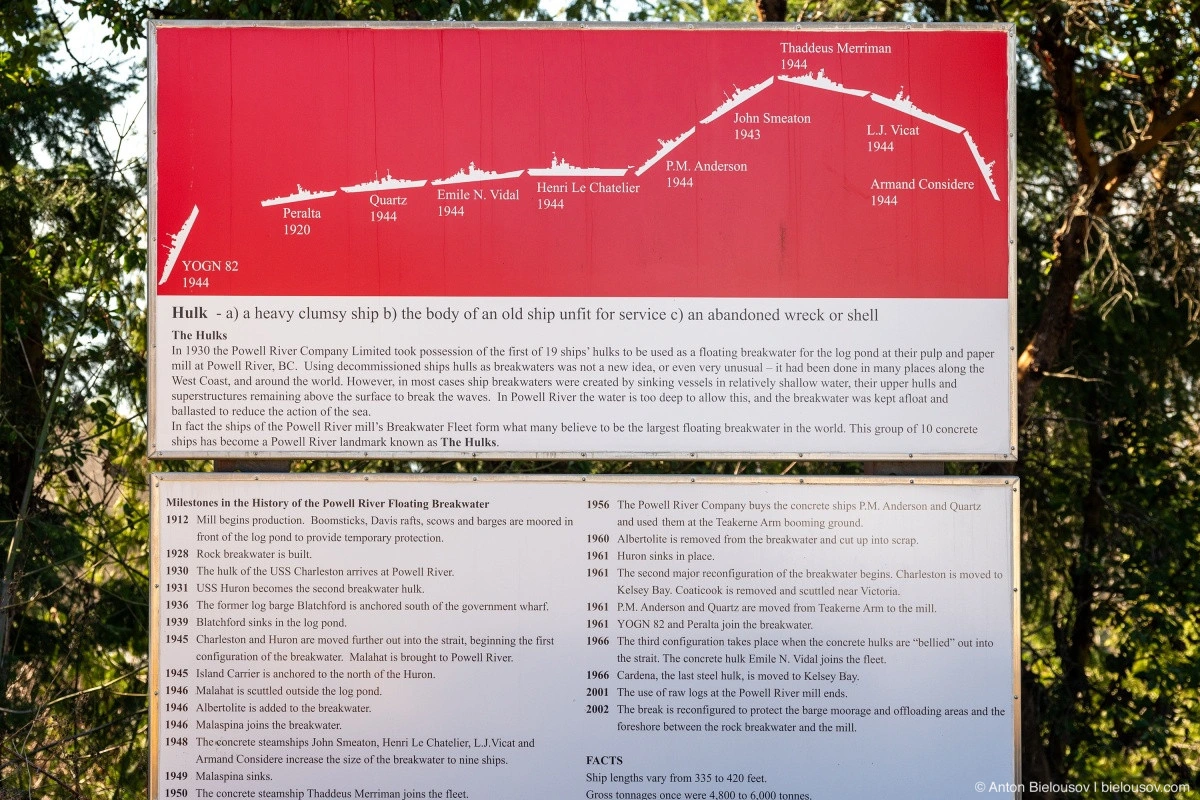
I imagine that a similar fate awaits all other hulks from Powell River in the future.
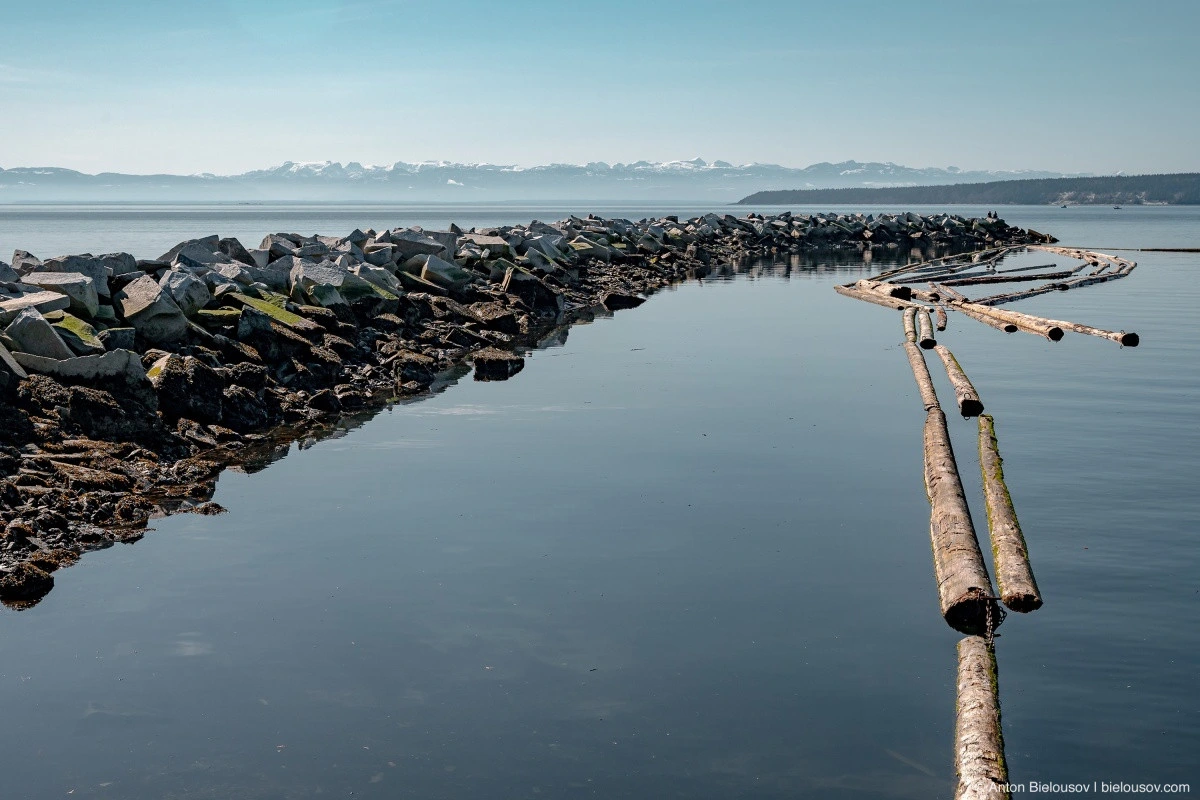
Another reason to visit this place and have a great time, in my opinion. Yet another reason is the possibility that the name Powell River may soon disappear. The name, that is, not the town itself. The town is named after Israel Wood Powell (1836–1915), the first superintendent of Indian Affairs in 1870. On one hand, he was the one to first bring the Canadian flag to British Columbia when it joined the federation, but on the other hand, his name is associated with the enforcement of bans on many Indigenous traditions (including potlatch) and the establishment of residential schools, where children were taken from Indigenous families for assimilation, often forcibly or under pressure. In recent years, mass graves of children have been discovered on the grounds of these schools, but even before that, they were notorious for social and other experiments conducted on their students. This topic undoubtedly deserves a separate post. In short, the name Powell River has a significant colonial connotation, and it’s uncertain how much longer it will last. The original name the settlement had in 1918 was Sliammon, and it is one of the possible replacements.
